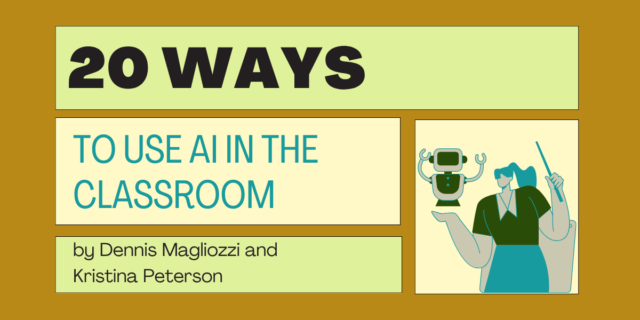
The content of this post has been lightly adapted from Supporting All Writers, K–2, part of the Units of Study in Writing, K–2. Supporting All Writers is a component of the Units of Study in Writing, K–2 boxed sets.
Your classroom’s writing center should be organized to support your students’ independence. To keep your writing center organized and accessible for your students, and to avoid overwhelming them with options, we’ve compiled a list of six tools you can slowly introduce into your classroom writing center.
Introducing New Tools into Your Classroom Writing Center
Below is a list of new tools to add, one at a time, to your classroom writing center across the school year, as you see students are ready for them.
1. Pre-made booklets in varying sizes
You’ll want to have plenty of pre-made booklets ready. Paper options should stretch writers to the edge of their zone of proximal development. If some students are easily filling up three pages with pictures and words, they may be ready for more pages. Large, medium, and small booklets also allow autonomy over what kids’ books will look like, facilitating decision making.
Try introducing this tool by saying, “Look! There are more booklets right here, waiting for you. They’re calling your name. They’re saying ‘Fill me up!’ Which size will you choose?”
Or, “You know what? I think you are ready for the next step! Do you think so? Let me show you a longer booklet. Tell me if you are willing to try that.”
2. Single sheets of writing paper
Single sheets of writing paper are important even when kids are writing in booklets, so writers can customize the number of pages in their booklets. Coach children to use single sheets to add to premade booklets or to replace pages as they revise.
Try introducing this tool by saying, “Wow, you have even more to say about Hot Wheels! You’ve got to add that! Where will it go? No more room? No problem. Look—this is a pile of single sheets of paper and you can always take one of these and add a page to your book.”
3. Staplers
Empower children to staple additional sheets into their booklets. Show children that you trust them to use powerful tools.
Try introducing this tool by saying, “Whoa! You’ve written all these pages! Now, stack them in the order you want them and then use a stapler to stick them all together in order!”
4. Scissors
Teach children to cut out pieces of their writing that don’t make sense, add flaps to allow them to try a second go at something, or scissor a page apart if the content actually belongs on two pages.
Try introducing this tool by saying something like, “Wait. This book is called My Puppy but... what’s your cat doing in this book? He’s not a puppy! You should make another book and call it My Cat. Here—take these scissors and cut the cat part out of this puppy book and I’ll show you how to stick that part into another book, a cat book.”
5. Mentor texts
Keep mentor texts in the writing center and encourage kids to independently get one of these texts, set it beside them as they write, and to try doing things the author has done.
Try introducing this tool by saying, “A writer like you needs some serious coaching from a real professional writer, so I’m going to give you your very own writing teacher. You ready? Here it is... (hold up book). What? You don’t think this looks like a teacher? Well, it is. Here, I’ll show you.”
6. Revision marks
To encourage and celebrate revision, you might set aside marks of a certain color—purple for royalty?—and invite kids to use those when they reread and add on.
Try introducing this tool by saying, “Remember, writers have a saying, ‘When you’re done, you’ve just begun.’ Now is the time to take your special revision marker and reread, thinking ‘What can I add on? What more can I say that goes here?’ I’m excited to see what you do!”
***
Download our FREE "Teaching the Writing Process" eBook today to learn strategies for developing confident and independent writers.
Grow confident writers with K-5 writing instruction resources that provide effective methods and tools to teach foundational skills and improve students' writing. Learn more about the Units of Study resources for K-5 Writing.
Download our free "Teaching the Writing Process" eBook



